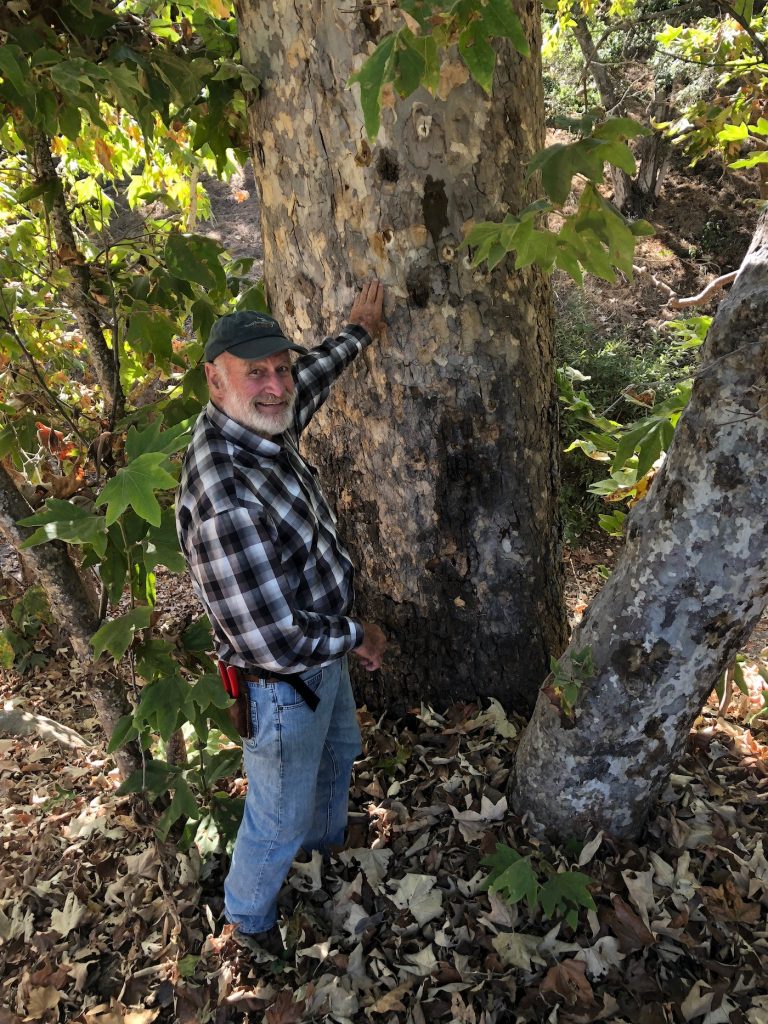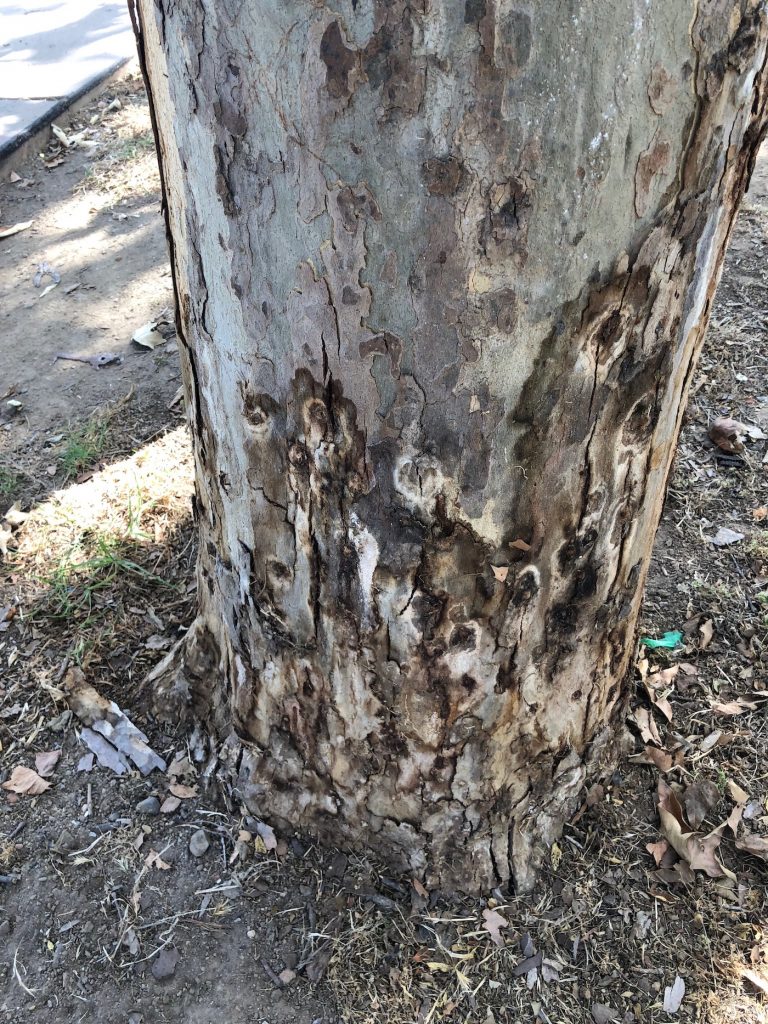Destructive Beetles Infest Montecito Trees

Montecito arborist Duke McPherson says there is a “silent killer” among us, and it has the potential to take out hundreds of native trees in Montecito in the coming years, drastically changing the look of our community. Called the Shot Hole Borer, the tiny beetle, no larger than a sesame seed, bores itself deep into trees without eating the wood, thereby avoiding ingesting pesticides. “It’s a sleeping monster, and Montecito residents need to be on the lookout for it,” McPherson said earlier this week at Lower Manning Park, where the beetles have crippled dozens of sycamore trees.
McPherson says he first came across the beetle three years ago, when there was an infestation on a local golf course in Montecito as well as on a cluster of trees on Hodges Lane. Earlier this year, McPherson was examining the trees located on the YMCA property in preparation for a report related to the facility’s proposed remodel and expansion. “In my report I’m suggesting that any sycamore trees that are removed as part of the project not be replaced, because I quickly found that they are infested with these borers,” he said. He soon came to realize that the beetle has attacked many more trees in the adjacent Lower Manning Park. It can and will attack many different types of trees, but in Montecito it’s only been found in western sycamores.

The beetle has been in Southern California since 2003, and has grown into a larger problem in Los Angeles and nearby counties since 2010. The bug tunnels into a healthy tree, bringing with it a specific fungi that they farm for food. The fungi suffocates the nutrient flow in the tree, crippling and eventually killing it. “Treatment is very difficult because they disappear into the wood and they don’t eat it,” McPherson explained. “Early detection and intervention is key.”
The symptoms of a tree infested with this bug include small entry holes about the diameter of a ballpoint pen. There will likely be a seepage of sap that stains the outside of the tree; advanced infestations will lead to branch die out or a skeletal look.
“We need to get ahead of this,” McPherson said, adding that an infestation caught early can sometimes be mitigated with the correct pesticide, if applied under the guidance of a certified arborist-trained pesticide operator. McPherson is working with the County’s Agricultural Department to help identify trees infested with the beetle; if a property owner suspects they may have a tree or trees infested, McPherson can be reached at treemanduke@cox.net.
Tree owners should inspect their trees regularly, looking for staining, holes, and signs of distress. Trees should be removed if they are seriously damaged. Residents can help avoid infestation by using only local firewood and mulch that does not show signs of infestation.







